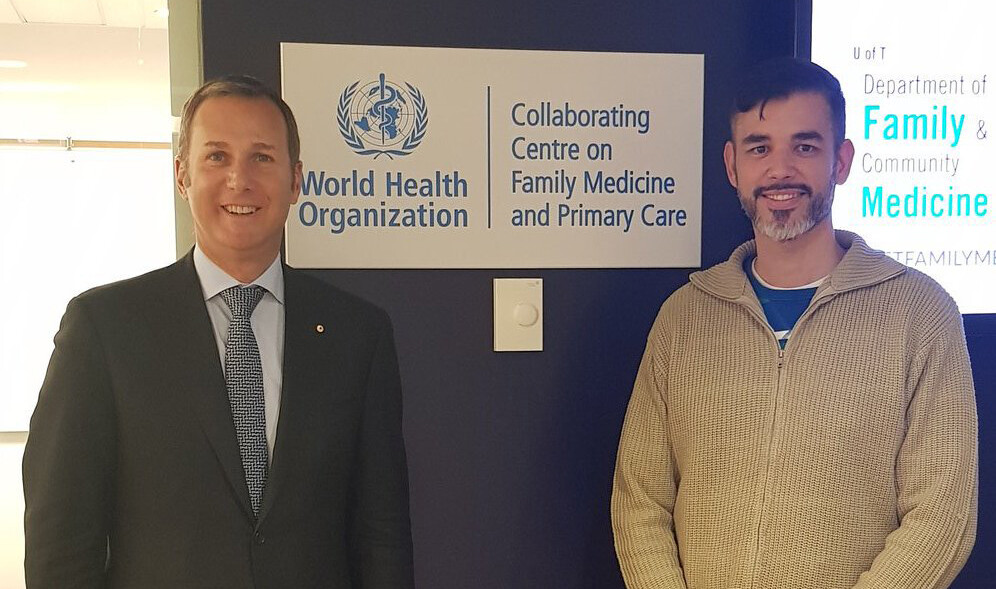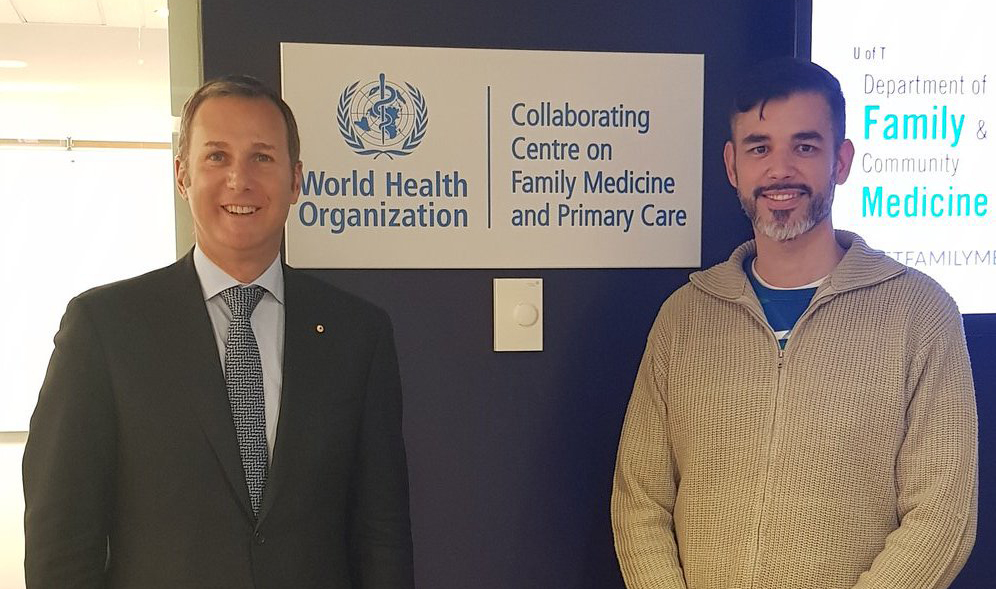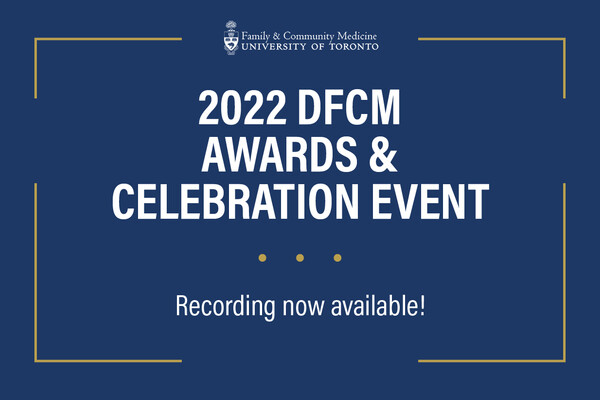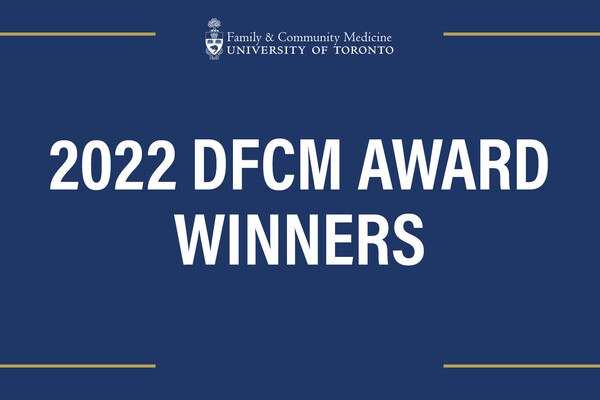DFCM Welcomes Visiting Professor from Brazil as Part of Ongoing Partnership


The University of Toronto Department of Family and Community Medicine (DFCM) welcomes Dr. Thiago Trindade from Brazil who joins us for three months (until the end of June, 2019) as a visiting professor. Dr. Trindade is a family physician and professor at the Federal University of Rio Grande do Norte. He is also the past president of the Brazilian Society for Family Medicine. During his time here, he will be visiting our faculty, academic teaching sites, partners and others across the province to learn more about how we teach family medicine, the Canadian health care system and the role family medicine and primary care play within it. We spoke with Dr. Trindade about his experiences in family medicine in Brazil, as well as the partnership between Canada and Brazil.
Tell us about the ongoing partnership in family medicine between Canada and Brazil.
The family medicine experience in Brazil is very inspired by Canadian family medicine. The history of this partnership began in the 90s with Dr. Walter Rosser - who was the Chair of the DFCM at the time – and Dr. Yves Talbot. They came to Brazil with a group of family physicians from Canada and helped to train some general practitioners who were working in Curitiba, a big city in Southern Brazil. The training of these general practitioners who would eventually become family doctors was the beginning of this partnership. With their experience, they started many other trainings and helped to develop family medicine in Brazil.
There has also been a great partnership between the Brazilian Society for Family Medicine and the Canadian College of Family Physicians since the 90s. In the past 20 years, we have received family physicians from DFCM to do workshops. For example, we recently developed our competency-based curriculum for family medicine residents, and the workshop to build this curriculum was led by Canadian family doctors.
What are the differences between family medicine practice in Canada and in Brazil?
I think the big difference is in the primary healthcare model. For example, in Brazil, our main model is what we call “family health strategy.” This strategy is based in our communities. We have catchment areas for each family health team, which consists of a family doctor, a nurse practitioner, two nurse assistants, at least four community health workers, and an oral team that includes a dentist. Each family must be affiliated with a family health team in their territory based on their specific neighbourhood. This main model covers around 65% of the Brazilian population. From what I’ve seen here in the Ontario health system, you have different models of primary care: the family health organizations, the family health teams, and the community health centres, for example. Each family belongs to a wide catchment area where they can enroll in the family practice of their choice.
Visiting Dr Nicole Nitti in her office at Access Alliance Community Health Centre. It was very Interesting to know more about their amazing work developed in the CHC, caring for uninsured and underserved population of Toronto. pic.twitter.com/Md7aInK7Sk
— THIAGO TRINDADE (@thiagogtrindade) 12 April 2019
I find this interesting because you have strengths and challenges in each model. We could further research these models and find which model could be more appropriate for each country. There won’t be a model that will fit every country, but every country must find their model of primary care. By learning from each other through international experience, we can improve our models, and I think this international partnership between Canada and Brazil must reach this kind of goal to improve primary health care.
What is different about family medicine education in Brazil versus Canada?
One of the issues that we are struggling with in Brazil is to create departments of family and community medicine in our universities. When we are admitted as family doctors in universities, we are often affiliated with other departments. For example, in my university I am in the Department of Internal Medicine. In other universities, many family doctors are affiliated with the department of public health.
Here, we can see a large department with many family doctors. I think education is the most important in what you are doing, but to have people dedicated just to research, to quality improvement, to continuing professional development - I think it's very interesting because you can expand the strength of family medicine to a lot of other roles, not just in education. What I'm seeing here is this great strategy to develop primary care in Ontario and Canada.
Visiting @ChooseWiselyCA office in Toronto. A great pleasure of meeting Dr Kimberly Wintemute and Hayley Thompson, who shared all their experiences in how to implement Primary Care CW recommendations. pic.twitter.com/blgsHmQno0
— THIAGO TRINDADE (@thiagogtrindade) 12 April 2019
What is the future for this partnership?
We still have some great challenges in Brazil. Although we have a system that is based in primary care, we still have a shortage of family doctors and we need to improve the strength of primary care. For this, we need to continue to research and train family doctors for preceptorship.
I think the future includes partnerships in research and collaborating in other frontlines in family medicine by helping to support other countries. And with the new WHO Collaborating Centre on Family Medicine and Primary Care here, Brazil wants to support and share our experience in family medicine and primary healthcare worldwide.
Sharing good moments with #dfcm colleagues during #CCME2019 . Thank you @MichaelKidd5 for invitation. pic.twitter.com/XZ0QiJi0M2
— THIAGO TRINDADE (@thiagogtrindade) 16 April 2019
News


